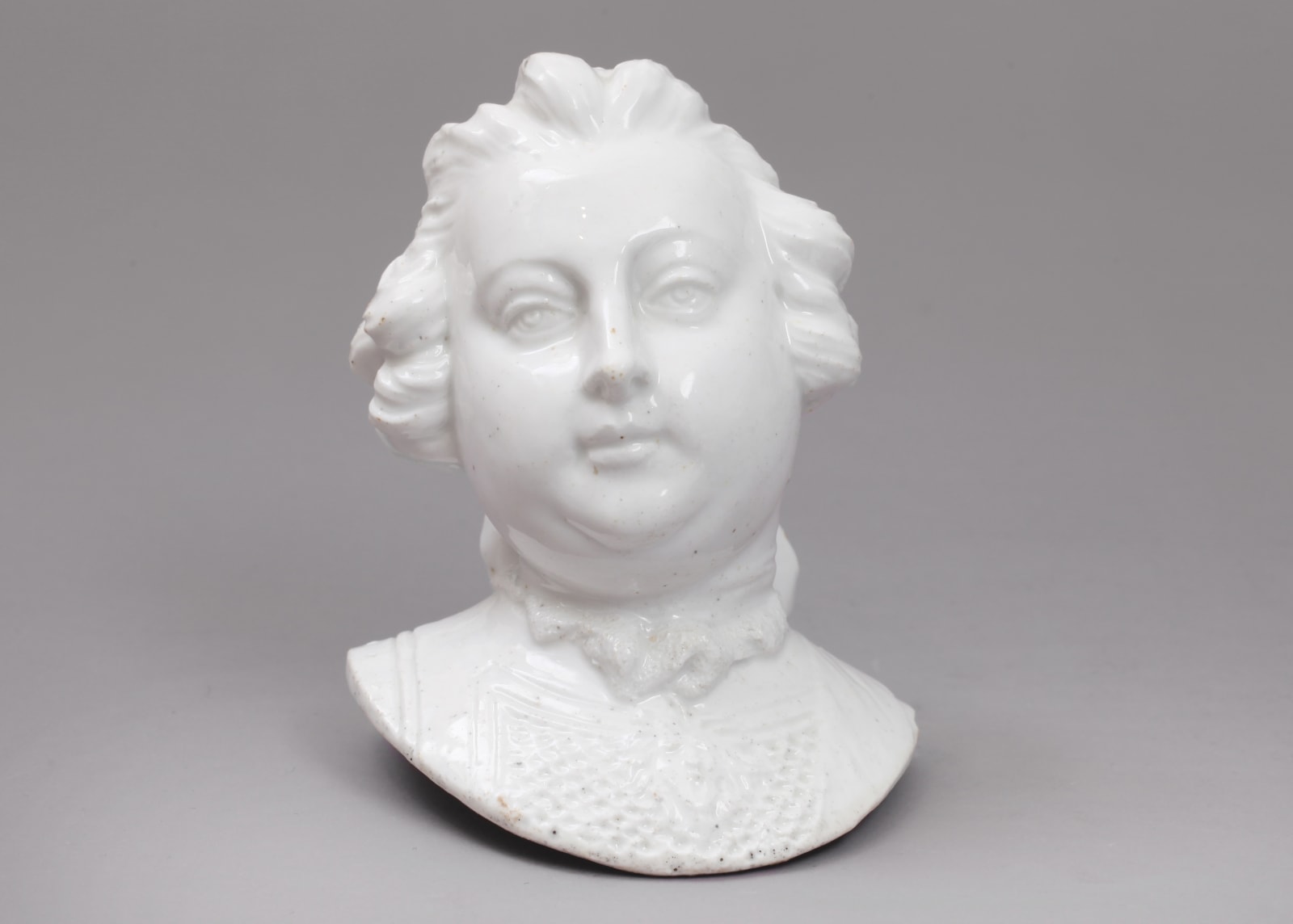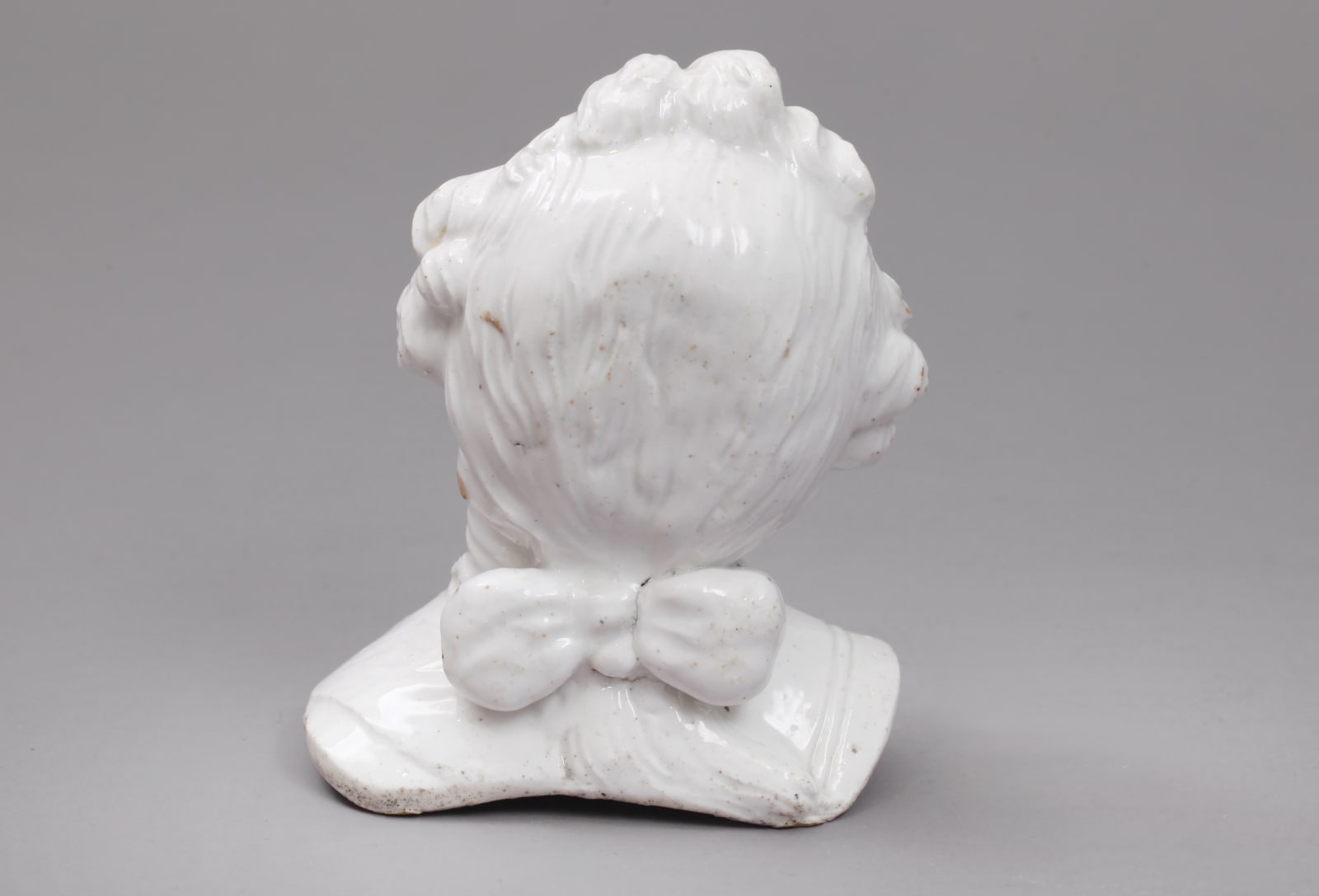

Chelsea Porcelain Bust of the Duke of Cumberland Of the Raised Anchor Period , Circa 1749-52
Chelsea Porcelain Bust of the Duke of Cumberland Of the Raised Anchor Period of Manufacture.
The Duke, front facing and looking lightly to the right, his periwig neatly dressed and tied ‘en queue’ at the reverse with a ribboned bow. Wearing scaled armour moulded in crisp low relief with the head of Medusa on the breastplate, his neck with a ruffled collar.
Prince William Augustus (1721-1765) was the youngest son of George II and Caroline of Ansbach. In 1726 he was granted several titles including Duke of Cumberland. The Duke pursued a military career and is best known as commander of the British Army against the Jacobite forces of Charles Edward Stuart ‘Bonnie Prince Charlie’, the ‘Young Pretender’.
There has been much speculation concerning the Duke of Cumberland's involvement in the Chelsea porcelain factory. An account exists by a Mr. Mason, who worked at the Chelsea factory transcribed by William Chaffers in the 1876 6th edition of his Marks and Monograms, p.913, 'I think the Chelsea China manufactory began about the year 1748 or 1749... It was first carried on by the Duke of Cumberland and Sir Everard Fawkener, and the sole management was entrusted to a foreigner of the name of Sprimont...' Sir Everard Fawkener was the Duke's secretary and there is no doubt Fawkener was closely involved with Nicholas Sprimont's porcelain business, through helping him and possibly advising him with property related matters but also as a person who had access through his contacts to high ranking members of society at Court. Fawkener was the go between for Sprimont to borrow from the collection of Meissen porcelain belonging to Sir Charles Hanbury-Williams, the Ambassador from the Court of St James to the Court of Augustus the Strong Elector of Saxony and King of Poland, so that Chelsea could make copies.
In a letter to his friend Henry Fox of Holland House, where some of Sir Charles’s porcelain was stored, dated the 9th June 1751, Hanbury-Williams wrote …'I have therefore told Sir Everard, that, If he will go to your house, you will permit him, and anybody he brings with him, to see my China and to take away any such pieces as they may have a mind to copy. I find also that the Duke (Cumberland) is a great encourager of the Chelsea China, and has bespoke a set for his own Table.'
Aside from providing the factory with his custom, it seems unlikely that the Duke had any financial involvement in the venture.
Even if he was not a financial backer, the Duke was still an important and wealthy patron of the Chelsea factory and Sir Everard Fawkener no doubt encouraged the production of this bust of his employer. For the Bust of the Duke in the British Museum see Elizabeth Adams, ‘Chelsea Porcelain.’ p.70, fig.6.7. Another example at Colonial Williamsburg, see John Austin, ‘Chelsea Porcelain at Williamsburg.’p.114, pl.107. The Judge Irwin Untermeyer example now within the Metropolitan Museum of Art, New York. The Lady Charlotte Schreiber example now in the Victoria and Albert Museum. The example from Lord and Lady Fisher's collection is illustrated by Dr F Severne Mackenna pl.14, fig.35.
Provenance: Mrs Norman Robertson and Private Collections.
Join our mailing list
* denotes required fields
We will process the personal data you have supplied in accordance with our privacy policy (available on request). You can unsubscribe or change your preferences at any time by clicking the link in our emails.

